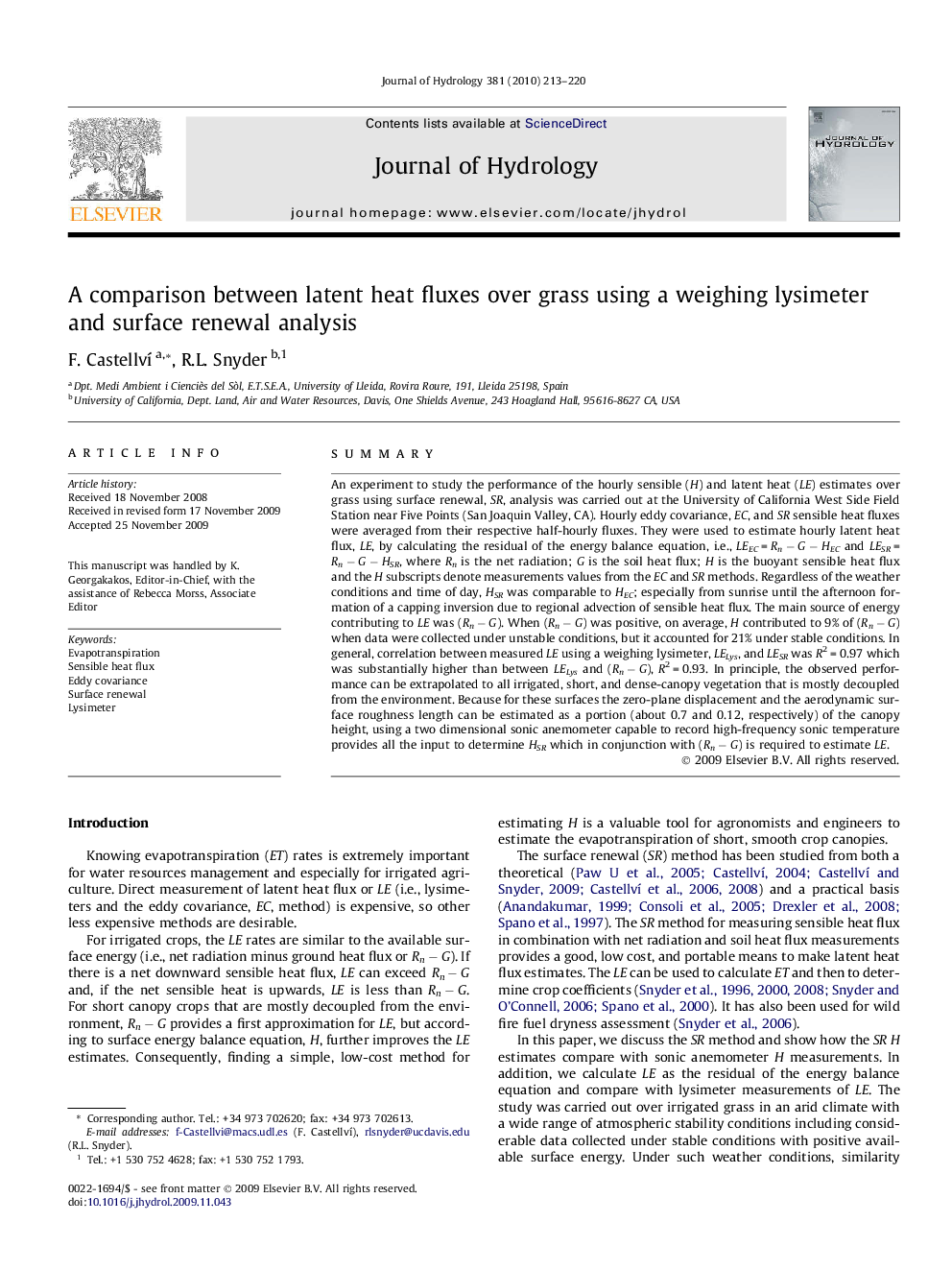| کد مقاله | کد نشریه | سال انتشار | مقاله انگلیسی | نسخه تمام متن |
|---|---|---|---|---|
| 4578248 | 1630062 | 2010 | 8 صفحه PDF | دانلود رایگان |

SummaryAn experiment to study the performance of the hourly sensible (H) and latent heat (LE) estimates over grass using surface renewal, SR, analysis was carried out at the University of California West Side Field Station near Five Points (San Joaquin Valley, CA). Hourly eddy covariance, EC, and SR sensible heat fluxes were averaged from their respective half-hourly fluxes. They were used to estimate hourly latent heat flux, LE, by calculating the residual of the energy balance equation, i.e., LEEC = Rn − G − HEC and LESR = Rn − G − HSR, where Rn is the net radiation; G is the soil heat flux; H is the buoyant sensible heat flux and the H subscripts denote measurements values from the EC and SR methods. Regardless of the weather conditions and time of day, HSR was comparable to HEC; especially from sunrise until the afternoon formation of a capping inversion due to regional advection of sensible heat flux. The main source of energy contributing to LE was (Rn − G). When (Rn − G) was positive, on average, H contributed to 9% of (Rn − G) when data were collected under unstable conditions, but it accounted for 21% under stable conditions. In general, correlation between measured LE using a weighing lysimeter, LELys, and LESR was R2 = 0.97 which was substantially higher than between LELys and (Rn − G), R2 = 0.93. In principle, the observed performance can be extrapolated to all irrigated, short, and dense-canopy vegetation that is mostly decoupled from the environment. Because for these surfaces the zero-plane displacement and the aerodynamic surface roughness length can be estimated as a portion (about 0.7 and 0.12, respectively) of the canopy height, using a two dimensional sonic anemometer capable to record high-frequency sonic temperature provides all the input to determine HSR which in conjunction with (Rn − G) is required to estimate LE.
Journal: Journal of Hydrology - Volume 381, Issues 3–4, 15 February 2010, Pages 213–220